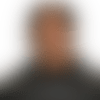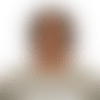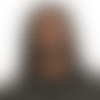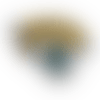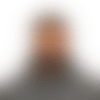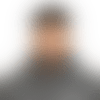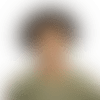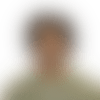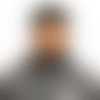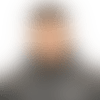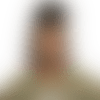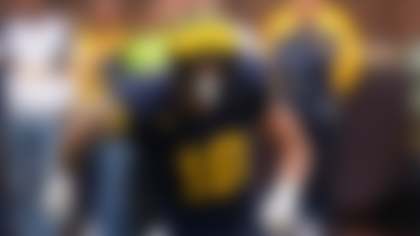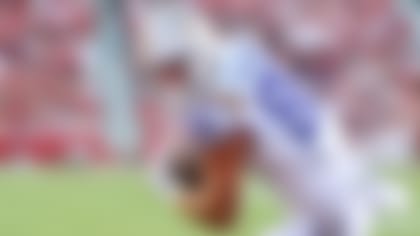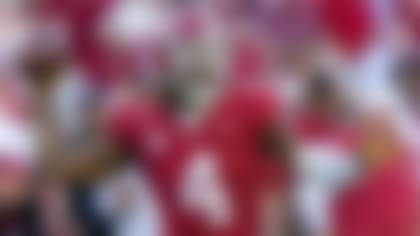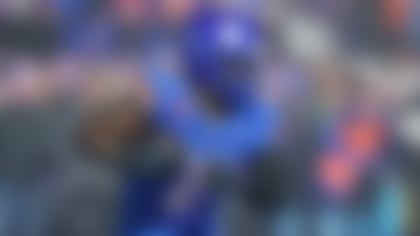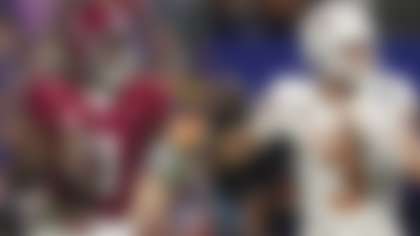I always do my mock drafts a little differently from the traditional method, in that my team-prospect pairings are based on optimizing for wins in the upcoming season -- in a structured way. Here's a quick look at my process:
- I take the best available information about free agency, which right now is admittedly not much more than what we know about player contracts, to predict players' market value.
- I then check free agents' projected market value against the anticipated salary-cap space for each team.
- Finally, I add potential free agents or drafted players to different teams and identify which individuals increase teams' projected win total the most. (My player model leverages historical pre-draft player data to forecast NFL performance.)
I'm starting this process early again this year, which is cool because I am excited to track how things change with free agency and as the draft process evolves. A little housekeeping: I used computer vision-derived measurements and stats in my player evaluations, and all of my speed, burst and advance tracking notes are based on on-field game speed metrics.
NOTES:
- The order for picks 1-32 is set following the conclusion of Super Bowl LVIII.
- Tune in for live coverage of the 2024 NFL Scouting Combine beginning Feb. 29 on NFL Network and NFL+.
In this theoretical exercise, the Bears keep Justin Fields and pick this high-floor (aka lowered risk) LT prospect, who has experience but is also young (20 years old) with a ton of upside. Alt just passes receiver Marvin Harrison Jr. in immediate impact for the Bears’ O-line, which allowed their QBs to be pressured at the highest rate in the league last season (45.1 percent). This helps to show the value of the Bears’ first-round equity, which will allow them to move all over the board if they want to.
Williams’ reunion with his former USC coach, Kliff Kingsbury (now Washington’s OC), makes this a higher-upside match than it would have been a week ago (before Kingsbury was hired). I am not sure about the gap other people see between the QBs in this year’s draft, but my evaluation comes down to refinements between styles, opponents, team infrastructure, etc. for the top two, and potentially the top three.
My models love Maye’s upside for a number of reasons, but one that stands out is the levels/routes he has thrown per computer-vision tracking data. He did not have the most consistent route runners and his ability to connect on many different throw speeds was extremely accurate. His intermediate throws that turned into receptions had a speed variance of about 7 mph. I only looked back for three seasons, but the average for Power Five QBs at the intermediate level is 3.4 mph.
No one is more surprised than me that an offensive lineman wasn’t picked here, but the time Kyler Murray -- and the scheme -- can buy is best aided here with this high-upside receiver. Harrison’s routes are crisp, reliable and create separation, which made him a problem for defenses even though he didn’t have the most accurate QB last season.
Every year I get some data that looks like the prototype of the model (I measure players against prototypes of “ideals”). The prototype here shows signs of an elite trajectory based on ball skills and burst/speed (Arnold got better as the season went on). All of that is mixed with a dash of potentially getting caught being too aggressive. Why am I mentioning this in the Chargers section? Well, you have to be able to stop the pass, especially when you face Patrick Mahomes twice a year.
Odunze is my WR2 by the slimmest of margins. In fact, his contested-catch ability, as well as his body control, ranks in the top 20 percentile in a 10-season sample. I also cannot believe my models didn’t choose an O-lineman here either, as it is an area of big need. That should tell you how much my evaluations love Odunze.
Fashanu will be taught by OC Nick Holz and O-line coach Bill Callahan, which will allow him to showcase his run-blocking capabilities as he adjusts to pro-level pass protection. Fashanu is another younger tackle with experience and the makings of being a great NFL player. His balance through contact is an area where is likely to excel early on, as he’s massive and quite immovable when set.
The model flags high marks for accuracy, a quick release and pocket awareness. My favorite note on Daniels is that computer vision shows he can get his feet set to throw (as opposed to throwing when off-balance) in the top 10 percentile (fastest) in my 10-season sample.
Tigers go back-to-back! Nabers ranks in the top 15 percentile in burst off the line of scrimmage, so defenses might want to press him. He also has the lowest speed erosion when running after contact of any WR in the past three NFL Scouting Combine classes.
I think my model has a crush on Fuaga. I checked three times, and his center of gravity percentage (how often he stays balanced through contact) ranks No. 1 among all right tackles in the run game in a five-season sample. There’s a lot to like in pass pro, too. I’m guessing Aaron Rodgers would approve of this pick.
Turner's burst ranks among the top 20 percent of edge prospects in my 10-season sample. He doesn't lose speed/velocity when traveling in a non-straight line, which means his pressures cause disruption more frequently (he posted 10 sacks last season, up from four as a sophomore). I'm pretty sure defensive coordinator Brian Flores would give GM Kwesi Adofo-Mensah a hand-written thank-you note if Turner ends up the choice here.
There is a long road between now and the draft. We’ll be watching to see what Denver does at the quarterback position, but Broncos Country, your team would immediately improve if you pick this very dynamic Iowa CB. Adding DeJean to complement Pat Surtain II would be pretty special. He has experience in off coverage, which allowed me to measure how he takes straight lines at a rate in the top 18 percentile (this can also be considered a gauge of his ball-tracking ability).
You might have heard he had a 77.4 completion percentage last season (led FBS). But did you know his accuracy dropped off the least of any Power Five QB on designed rollouts? Now you do!
Thomas led the FBS with 17 receiving TDs, and they came from both the slot and out wide. He and Chris Olave together would be a really scary duo for opposing defenses.
Bowers is one of the new-mold tight ends, which means he forecasts to be especially potent in a more modern offense. Enter Shane Steichen, Anthony Richardson and the Colts' scheme. Between blocking, aligning in the slot and out wide, making catches in the vaunted middle-third of the field and generally bullying defenders, Bowers is the kind of versatile piece that could make an immediate impact on the Colts' offense -- similar to what we saw from rookie tight ends in Detroit and Buffalo last year.
Do I love trying to decipher how the college trend of the 3-3-5 defense translates to the NFL? Yes, I do. Murphy is an explosive player who recorded five sacks that weren’t from the spots that players in that configuration most often earn sacks. I feel like the Seahawks, with new head coach Mike Macdonald as the architect, will help turn Murphy into a really scary problem for offenses.
Verse is the power rusher prototype. He wins straight-ahead leverage matchups against O-linemen at a top 25 percentile rate. Utility in the run game is massive here, as the combination with Josh Allen and Co. creates a lot of value (this assessment supposes Allen, an impending free agent, will be returning).
Latham has rare size (6-foot-6, 335 pounds) and power, and showed elite ability to win in both pass and run situations in college. He also showed on tape he can recover quickly on a play, which would go a long way in helping to keep Joe Burrow healthy.
Guyton doesn’t have as much experience as some of the other O-linemen in his class (15 starts over four seasons), but the attributes are all there, especially if he has the benefit of playing with a veteran QB. Over the past eight seasons, Matthew Stafford ranks behind only Aaron Rodgers and Patrick Mahomes (among active QBs) in adding win share to an offensive line.
I have multiple models I use in my analysis during draft season. Among them is the model I use to make picks for mock drafts, while another helps to estimate where a player will actually end up; the latter focuses more on coaches/GMs/franchise historical trends. That model projects Barton to go in Round 2, but that could be in part due to interior linemen often being undervalued in the draft -- or at least not viewed, compared with other positions, as being worthy of a first-round pick. Barton is at his best when he's combo blocking, pulling and when the defensive tackle is head on. He definitely has the potential to upgrade the Steelers' run game, which would certainly please new offensive coordinator Arthur Smith.
Coleman ranks in the top 22nd percentile in contested-catch rate (10-season sample) and has alignment versatility. Add his ability to the speed already on this team … and yikes.
I told you earlier my model has a crush on Fuaga. Well, it might be smitten with JPJ, too. Trying to find a rookie to replace Jason Kelce's impact, on the field and in the locker room, is a silly proposition, but JPJ has the tools and production to honor the future Hall of Famer's legacy the way it deserves. The Oregon product recorded the fewest negative plays at the center position (he's played the interior O-line, and even took snaps at DT) of any qualified center in the Power Five last season, per computer vision. Yet another lineman with a No. 1 ranking.
Mitchell has the type of burst that is fun to watch and fun to track. He can stop and start exceptionally well, turn his hips without losing speed and even has been helpful stopping the run. Based on his Toledo film, his burst ranks in the top 30 percent among CBs (10-season sample).
Fautanu projects to continue playing left tackle at the pro level, though he has the versatility to move inside if needed. He's nasty as a run blocker and exceptional on screens. In mocking Fautanu to the Cowboys, I'm not suggesting Tyron Smith needs to be replaced. But I do worry about the 33-year-old veteran's ability to stay healthy for a full season.
New defensive coordinator Jeff Hafley, who was the head coach at Boston College from 2020 to '23, saw Wiggins' potential up close when the speedy Clemson corner recorded two pass breakups in a 31-3 rout of the Eagles during the 2022 season. Wiggins has a lot of great man-coverage traits and, based on his in-game speed, should run a blazing 40-yard-dash time. Adding Wiggins, who should improve the back end of the Packers' defense, affords Green Bay the most value at this spot.
Rakestraw seems like a Todd Bowles prototype: He ranks in the bottom-15 percentile at his position in "fatigue rate," which means he doesn't slow down at the end of the games, and compares favorably in ball-tracking ability and in run support. Chef’s kiss for the fit.
Now the O-line help arrives! So, the Cardinals get Marvin Harrison Jr. AND Mims. Although the former Bulldog started just eight games during his three-season college career (in part due to injury), he has tremendous upside. I spent a year trying to measure waist-benders, and I am able to say that Mims has a very low probability of being a waist-bender at the next level. What does that mean? He has a high chance of consistently winning leverage fights.
Franklin has experience out wide and in the slot, and is a tall receiver (6-foot-3) who runs FAST in pads. He'll add an explosive element and YAC ability to the Bills' offense.
The Lions' pass rush and perimeter defense are two areas of need. Detroit goes with the former in this simulation, selecting the Penn State edge rusher who boasts elite burst off the ball. Robinson's college speed -- in pads -- ranked in the eighth percentile at his position (10-season sample). Pretty sure DC Aaron Glenn wouldn't mind working with that.
It’s very close in my model between Latu and North Carolina WR Devontez Walker as the best fit for the Ravens here, but Latu's value at the edge-rushing position slightly wins out. The pre-draft medical evaluations for Latu will be something to monitor, as he did have a serious neck injury at Washington before transferring to UCLA. If Baltimore were to go in a different direction at the position, next up would be Darius Robinson from Mizzou.
Not all left tackle prospects forecast the potential to play on the right side early in their careers -- Morgan does. In fact, his stats suggest that in the Niners' offense, specifically, he'd likely be able to make that position switch and play at a high level as early as Week 1. His ability to quickly get out of his stance and recover when losing the initial battle are also reasons he offers such position versatility.
L'Jarius Sneed appears to have played himself into a very big pay day this offseason, which means Kansas City might have an opening at corner entering next season. McKinstry’s results in the 40-yard dash and agility drills will matter a lot, especially given how close the margin is in my models between him and UNC wideout Devontez Walker, who will likely run fast in Indy, and how much we know the Chiefs love speed.

















